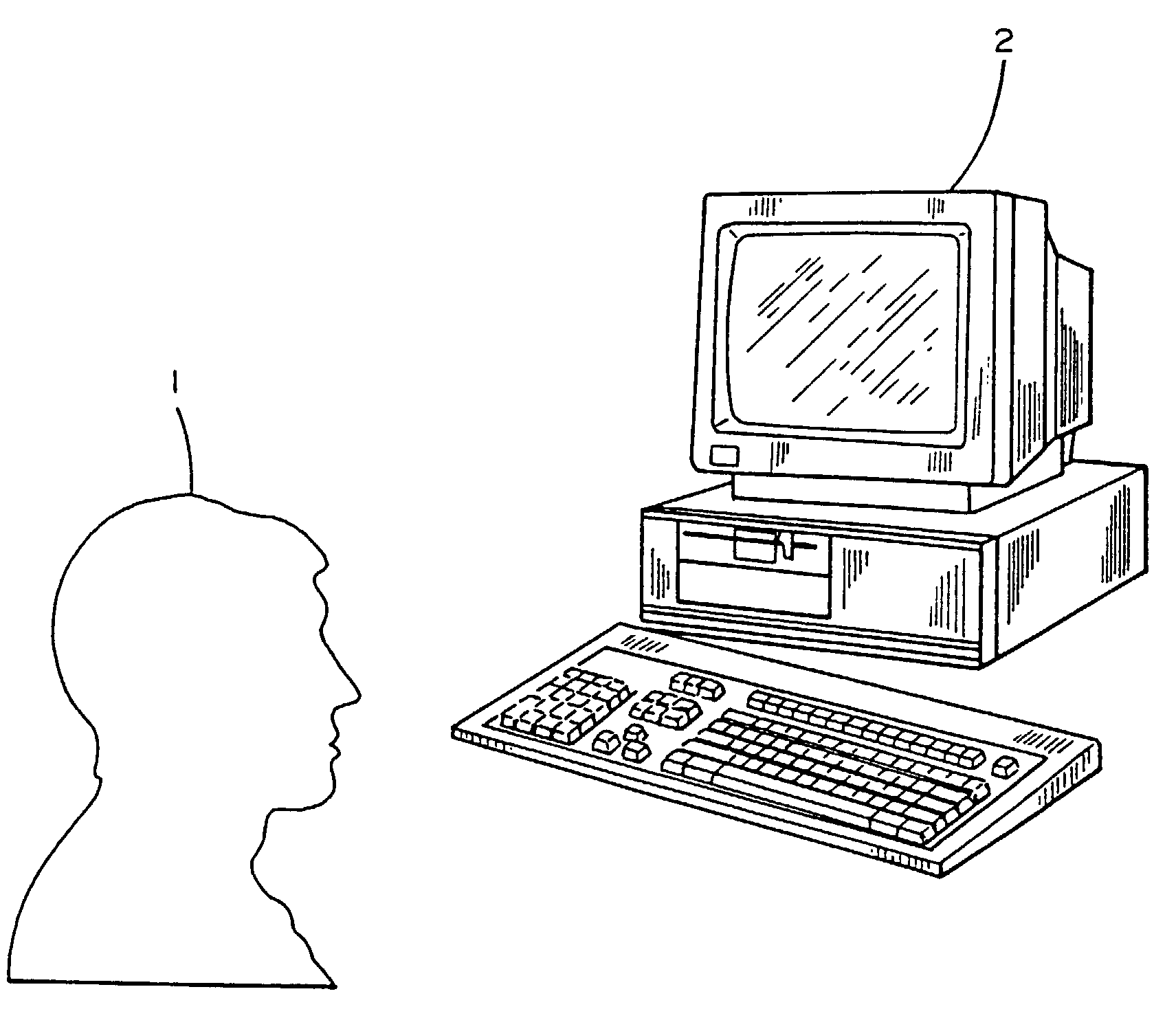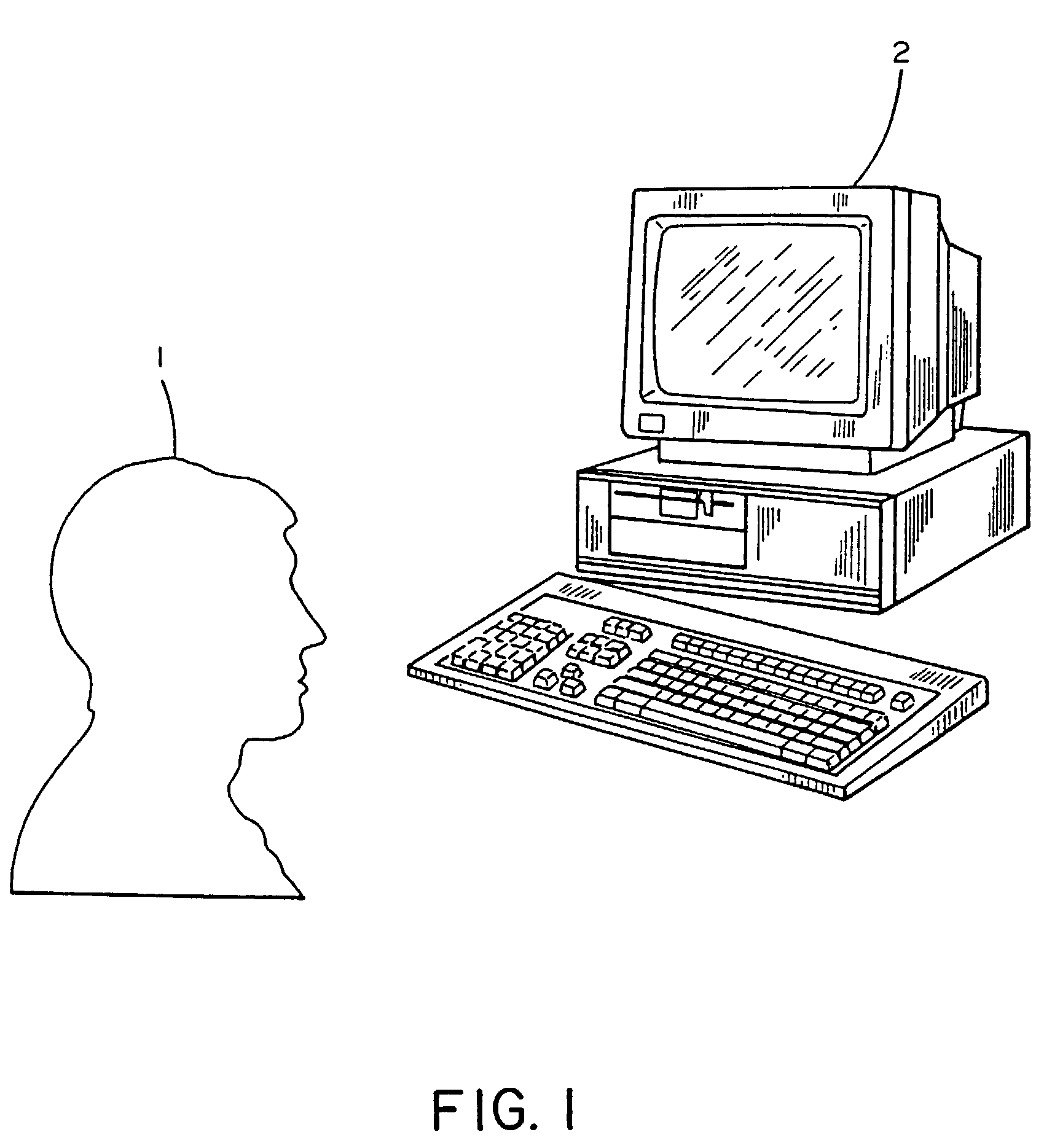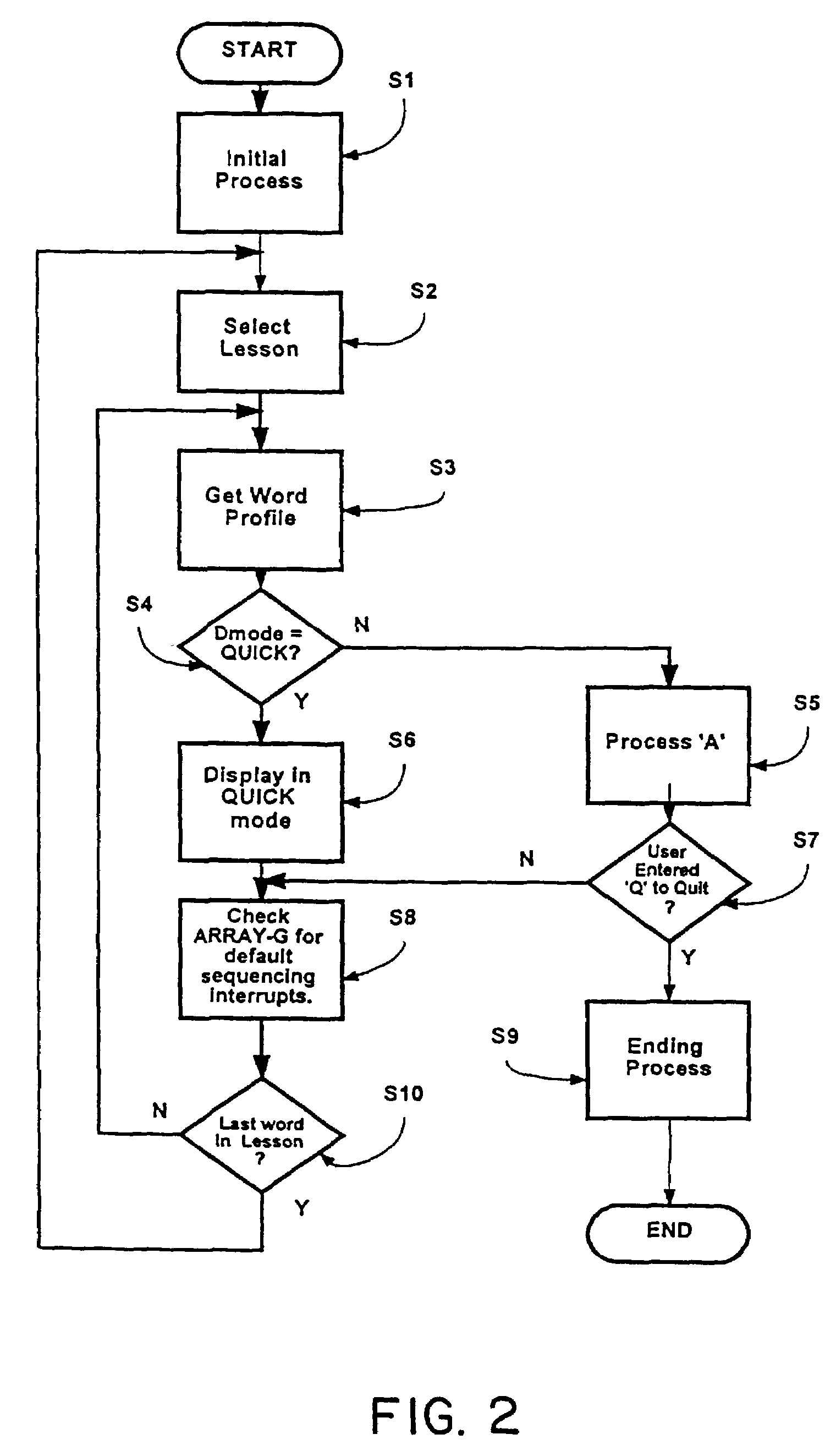Method and system for short-to long-term memory bridge
a technology of short-to-long-term memory and bridge, applied in the field of short-to-long-term memory bridge, can solve the problems of not being able to identify exactly what was incorrect about his answer, neither of these approaches attempts to deal with partially correct answers, and many weaknesses of existing ar
- Summary
- Abstract
- Description
- Claims
- Application Information
AI Technical Summary
Benefits of technology
Problems solved by technology
Method used
Image
Examples
Embodiment Construction
[0035]An embodiment of the present invention includes a series of flow charts automatically implemented, such as on any general-purpose computer, including “personal” microcomputers. Those skilled in the art will recognize that the same logic used for written questions / written answers can also be used in, but not limited to audio questions and aural responses (i.e., in study of pronunciation and elocution), as well as graphics and other GUI systems (e.g., in the study of anatomy or other charts to which the user responds by pointing and clicking on the response with a mouse).
[0036]An embodiment of the present invention carefully times and tracks the user's progress without exerting any pressure or rushing the user. The present invention stores the time and date when the user learns an answer, and the amount of time elapsed from that date is used to determine the presentation of the material and the schedule of reviews.
[0037]The program logic of the present invention reviews material...
PUM
 Login to View More
Login to View More Abstract
Description
Claims
Application Information
 Login to View More
Login to View More - R&D
- Intellectual Property
- Life Sciences
- Materials
- Tech Scout
- Unparalleled Data Quality
- Higher Quality Content
- 60% Fewer Hallucinations
Browse by: Latest US Patents, China's latest patents, Technical Efficacy Thesaurus, Application Domain, Technology Topic, Popular Technical Reports.
© 2025 PatSnap. All rights reserved.Legal|Privacy policy|Modern Slavery Act Transparency Statement|Sitemap|About US| Contact US: help@patsnap.com



